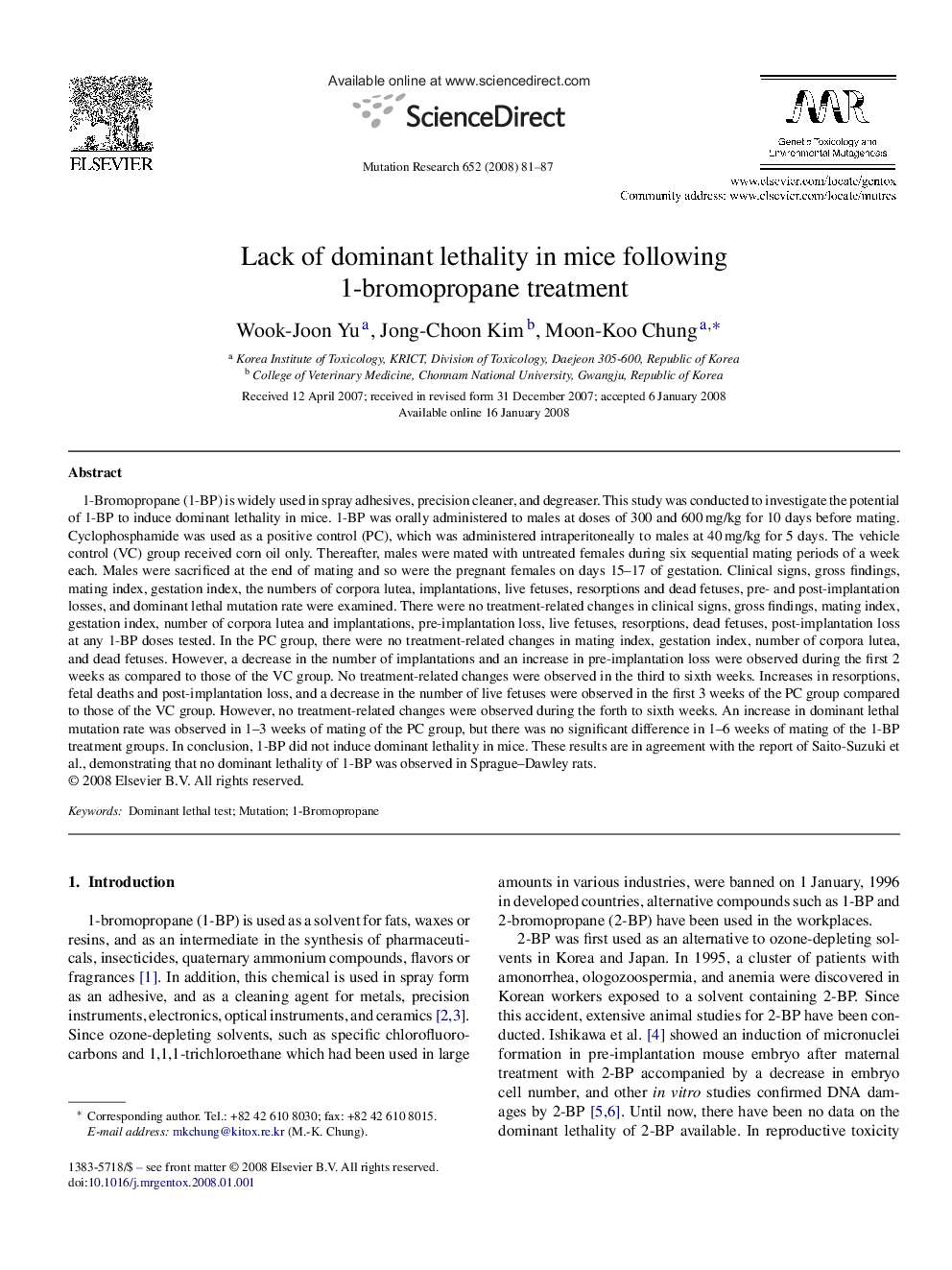| Article ID | Journal | Published Year | Pages | File Type |
|---|---|---|---|---|
| 2148980 | Mutation Research/Genetic Toxicology and Environmental Mutagenesis | 2008 | 7 Pages |
Abstract
1-Bromopropane (1-BP) is widely used in spray adhesives, precision cleaner, and degreaser. This study was conducted to investigate the potential of 1-BP to induce dominant lethality in mice. 1-BP was orally administered to males at doses of 300 and 600Â mg/kg for 10 days before mating. Cyclophosphamide was used as a positive control (PC), which was administered intraperitoneally to males at 40Â mg/kg for 5 days. The vehicle control (VC) group received corn oil only. Thereafter, males were mated with untreated females during six sequential mating periods of a week each. Males were sacrificed at the end of mating and so were the pregnant females on days 15-17 of gestation. Clinical signs, gross findings, mating index, gestation index, the numbers of corpora lutea, implantations, live fetuses, resorptions and dead fetuses, pre- and post-implantation losses, and dominant lethal mutation rate were examined. There were no treatment-related changes in clinical signs, gross findings, mating index, gestation index, number of corpora lutea and implantations, pre-implantation loss, live fetuses, resorptions, dead fetuses, post-implantation loss at any 1-BP doses tested. In the PC group, there were no treatment-related changes in mating index, gestation index, number of corpora lutea, and dead fetuses. However, a decrease in the number of implantations and an increase in pre-implantation loss were observed during the first 2 weeks as compared to those of the VC group. No treatment-related changes were observed in the third to sixth weeks. Increases in resorptions, fetal deaths and post-implantation loss, and a decrease in the number of live fetuses were observed in the first 3 weeks of the PC group compared to those of the VC group. However, no treatment-related changes were observed during the forth to sixth weeks. An increase in dominant lethal mutation rate was observed in 1-3 weeks of mating of the PC group, but there was no significant difference in 1-6 weeks of mating of the 1-BP treatment groups. In conclusion, 1-BP did not induce dominant lethality in mice. These results are in agreement with the report of Saito-Suzuki et al., demonstrating that no dominant lethality of 1-BP was observed in Sprague-Dawley rats.
Related Topics
Life Sciences
Biochemistry, Genetics and Molecular Biology
Cancer Research
Authors
Wook-Joon Yu, Jong-Choon Kim, Moon-Koo Chung,
